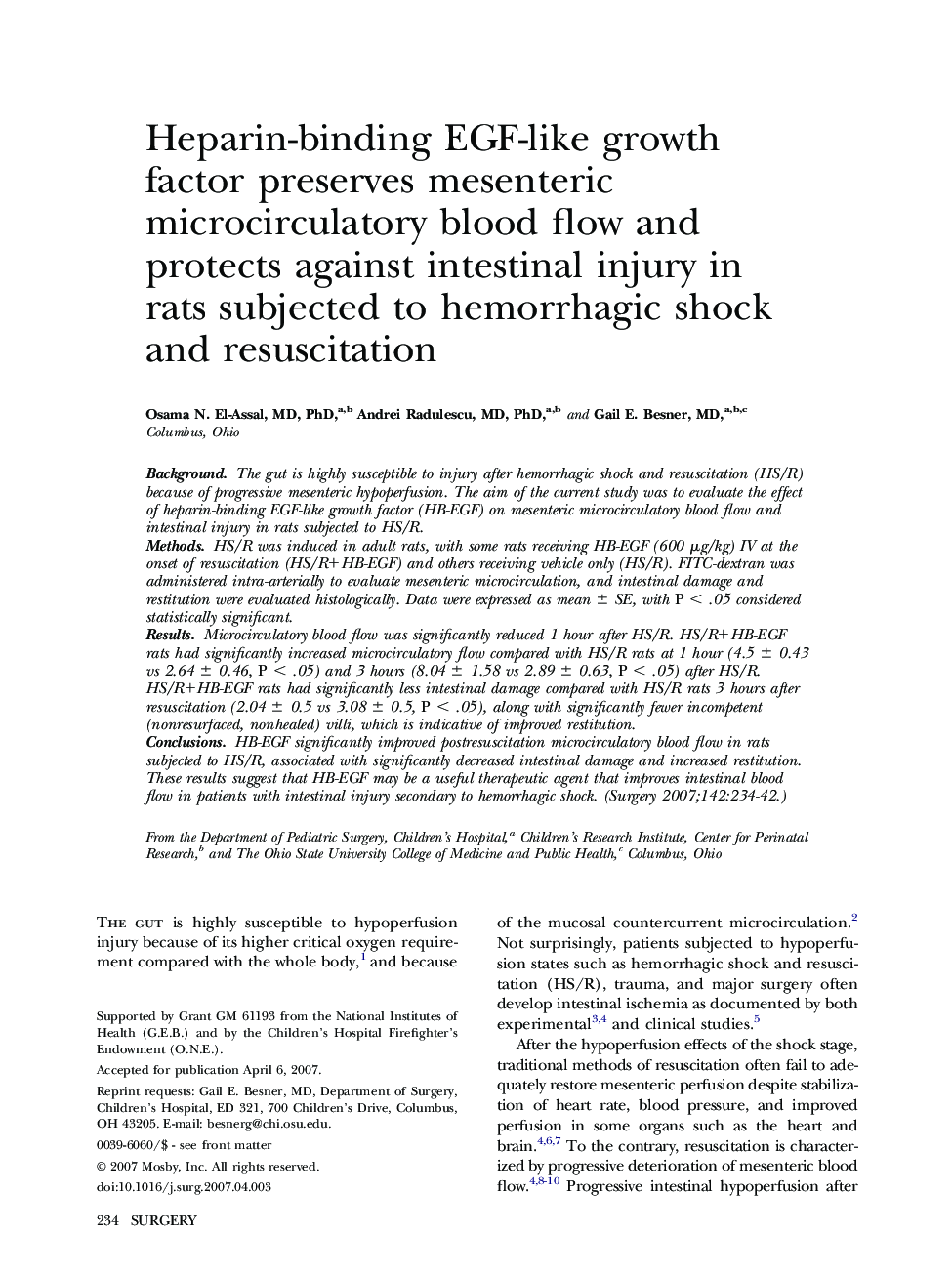| Article ID | Journal | Published Year | Pages | File Type |
|---|---|---|---|---|
| 4310336 | Surgery | 2007 | 9 Pages |
BackgroundThe gut is highly susceptible to injury after hemorrhagic shock and resuscitation (HS/R) because of progressive mesenteric hypoperfusion. The aim of the current study was to evaluate the effect of heparin-binding EGF-like growth factor (HB-EGF) on mesenteric microcirculatory blood flow and intestinal injury in rats subjected to HS/R.MethodsHS/R was induced in adult rats, with some rats receiving HB-EGF (600 μg/kg) IV at the onset of resuscitation (HS/R+HB-EGF) and others receiving vehicle only (HS/R). FITC-dextran was administered intra-arterially to evaluate mesenteric microcirculation, and intestinal damage and restitution were evaluated histologically. Data were expressed as mean ± SE, with P < .05 considered statistically significant.ResultsMicrocirculatory blood flow was significantly reduced 1 hour after HS/R. HS/R+HB-EGF rats had significantly increased microcirculatory flow compared with HS/R rats at 1 hour (4.5 ± 0.43 vs 2.64 ± 0.46, P < .05) and 3 hours (8.04 ± 1.58 vs 2.89 ± 0.63, P < .05) after HS/R. HS/R+HB-EGF rats had significantly less intestinal damage compared with HS/R rats 3 hours after resuscitation (2.04 ± 0.5 vs 3.08 ± 0.5, P < .05), along with significantly fewer incompetent (nonresurfaced, nonhealed) villi, which is indicative of improved restitution.ConclusionsHB-EGF significantly improved postresuscitation microcirculatory blood flow in rats subjected to HS/R, associated with significantly decreased intestinal damage and increased restitution. These results suggest that HB-EGF may be a useful therapeutic agent that improves intestinal blood flow in patients with intestinal injury secondary to hemorrhagic shock.
